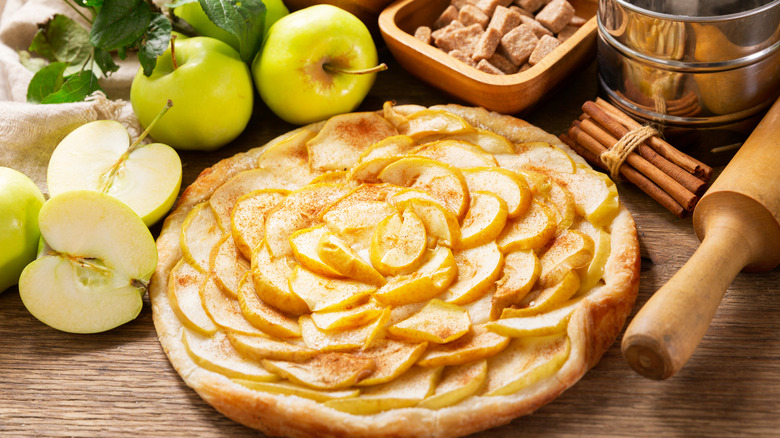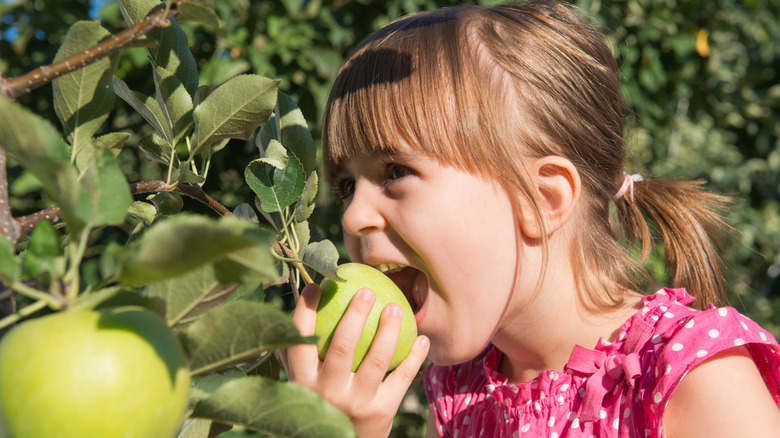What Type Of Apple Should You Use For Apple Pie Filling?
Just the mention of apple pie conjures images of red-gingham aprons and twinkle-eyed grandmas baking in cheery kitchens. Just ignore any reality checks that quelch that cherished snippet of Americana — we want our old-fashioned apple-pie stories! And that means the pies must taste good.
Apple pie recipes abound, some handed down through generations. There's a reason the best ones survive, and more than a few professional and home-kitchen chefs zero in on the types of apples from which to choose. Health benefits are typically an afterthought when it comes to apple pies, but the core ingredient — the apple — fortunately harbors a remarkably high level of nutrition.
All apple varieties, including the best one for pie fillings, contain valuable vitamins, fiber, and minerals, explains Healthline. Even better, they carry polyphenol antioxidants into your system, potentially creating barriers to heart disease, cancer, inflammation, and obesity. Those are big back-pats to crunching down on juicy apples, scientifically known as fruits of the Malus pumila tree, per the National Park Service.
But it's still about the pies — and not all apples prove their mettle, regardless of which granny stirs the bowl. Unless, of course, she's a certain granny from Australia in the 1860s.
Granny with a mission
If you guessed the sassy, green-skinned Granny Smith apple as the favored one for apple pie fillings, then you're on to something. Countless culinary and industry professionals choose it for pie-making, from a field of 7,500-plus varieties cultivated across the globe, per the University of Illinois Extension. The reason primarily comes down to composition.
The Washington Apple Commission serves growers of the leading apple-growing state in America, notes the U.S. Department of Agriculture. Washington State produces billions every year with names like Honeycrisp, Jazz, Golden Delicious, Sweetango, Kanzi, Gala, Braeburn, and the pie-queen herself, Granny Smith. The Commission reveals that Granny Smith was an actual person, an Australian grandmother named Maria Ann Smith who tenaciously cultivated the varietal roughly 160 years ago. It's now their all-time top pick for apple pies, noting how the fruits maintain structure and texture throughout the cooking process. The tarty twang also makes it stand out amongst the sugary sweetness in most pie recipes.
There's some baking science at work with the consistency of Granny Smith apples, explains Southern Living magazine, and it involves biology at the cellular level. Sweeter apples such as Golden or Red Delicious lose structure faster than acidic ones like Granny Smith. That keeps them firm within your pie filling, even as they bubble and bake to perfection. You can always toss in a few small chunks of a sweeter apple to tame the tartness.

